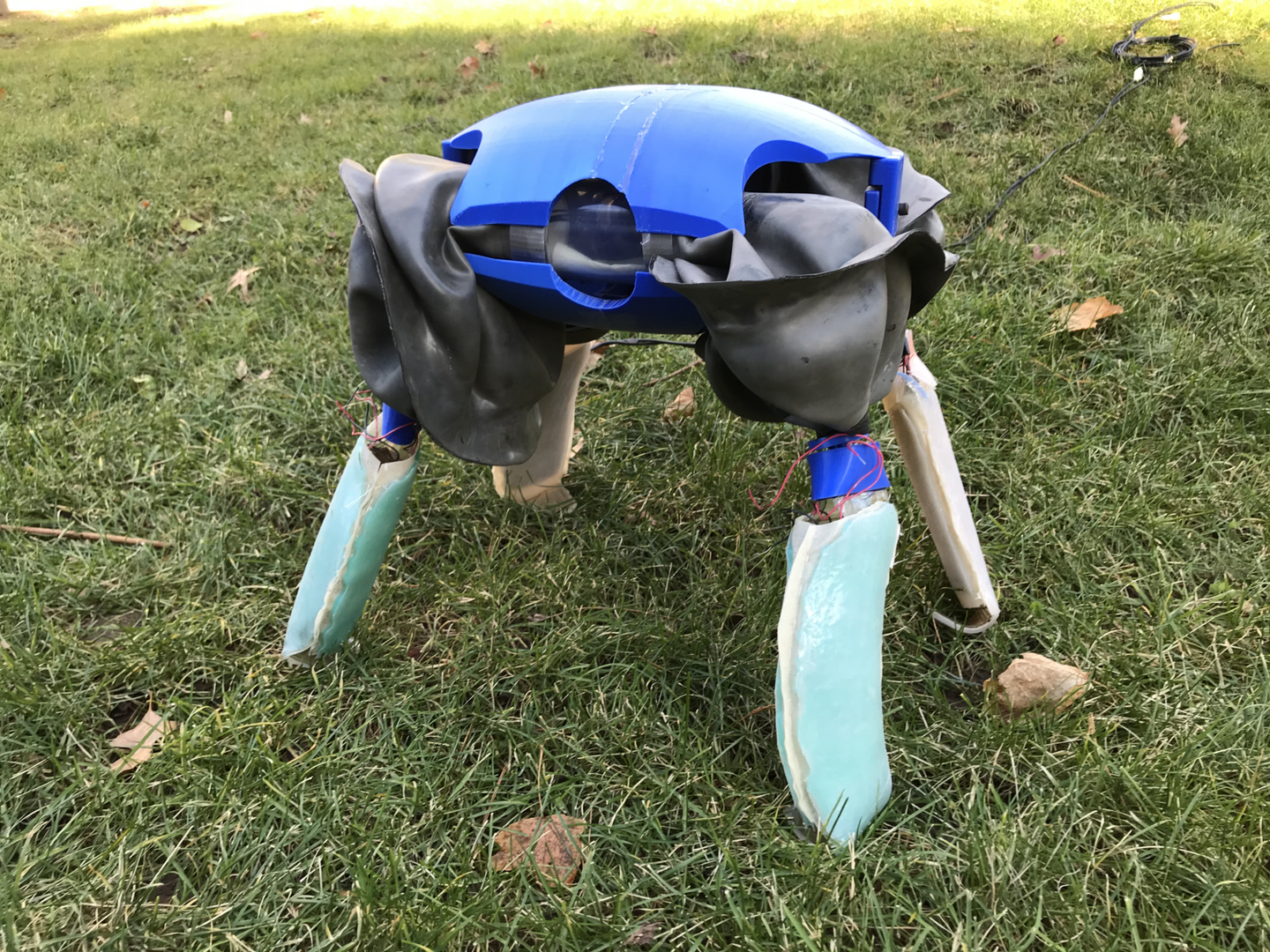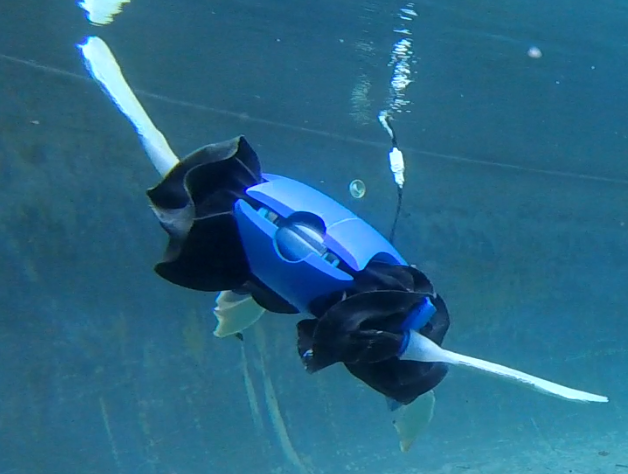
As a society, we can’t seem to get enough of robots that remind us of animals. We want to swim with animatronic dolphins, make them more social like our pets, and even use robotics to give legs to animals that haven’t had them in millions of years. Not to mention, we’ve learned a lot about how to make robots better from looking at our animal friends like octopuses, suckerfish, and insects. But, scientists at Yale have turned to another beloved creature to master the art of robotic amphibiosity.
In a new study out today in Nature, researchers found a way to create a semi-aquatic robot nicknamed the Amphibious Robotic Turtle, or ART. The adorable robot that looks a little bit like a long-legged crab has morphing limbs that can change shape, stiffness, and behavior, as well as use thermoset polymers and embedded heaters to warm up and change shape. Each of these limbs is operated by a shoulder joint with three motors. They take the shape of a cylindrical stumpy leg for walking (like a terrestrial tortoise on land) and can then turn into an aquatic flipper for swimming (like a sea turtle in the ocean).
[Related: The march of the penguins has a new star: an autonomous robot.]
“Terrestrial and aquatic turtles share similar bodies, with four limbs and a shell, but have distinctive limb shapes and gaits adapted for their specific environment,” Rebecca Kramer-Bottiglio, a professor of mechanical engineering at Yale University and the principal investigator of the study, said in a press release. “Sea turtles have elongated flippers for swimming, whereas land turtles and tortoises have rounded legs for load bearing while walking.”

The act of going back and forth between flippers and legs is what the authors call “adaptive morphogenesis.” For robots that may need to cross both land and sea doing things like monitoring shorelines, ocean farming, and measuring waves and currents, being able to “evolve on demand,” as Karl Ziemelis, chief physical sciences editor for Nature called it in the press release, could come in handy. And while the robot isn’t fast, (after all, it is a turtle robot) it is three times more efficient than a bipedal robot developed by the Massachusetts Institute of Technology, and performed similarly to four-legged robots like Ecole Polytechnique Federale De Lausanne’s Cheetah Cub and Tokyo Institute of Technology’s Titan V-III, according to the study.
[Related: A tiny crabby robot gets its scuttling orders from lasers.]
Theoretically, the ART doesn’t have to just stick to resembling a tortoise or sea turtle. “Although we focused on transitions between two discrete states, flipper and leg, intermediate shapes or even radically different shapes are certainly possible,” Robert Baines, a Ph.D. candidate at Yale and author of the study, tells New Scientist. For this little robot, it could be land and water today, infinite possibilities in the future.
The post ART, the turtle robot, gets by swimmingly in water and on land appeared first on Popular Science.
from Popular Science https://ift.tt/fkg03hU




0 Comments